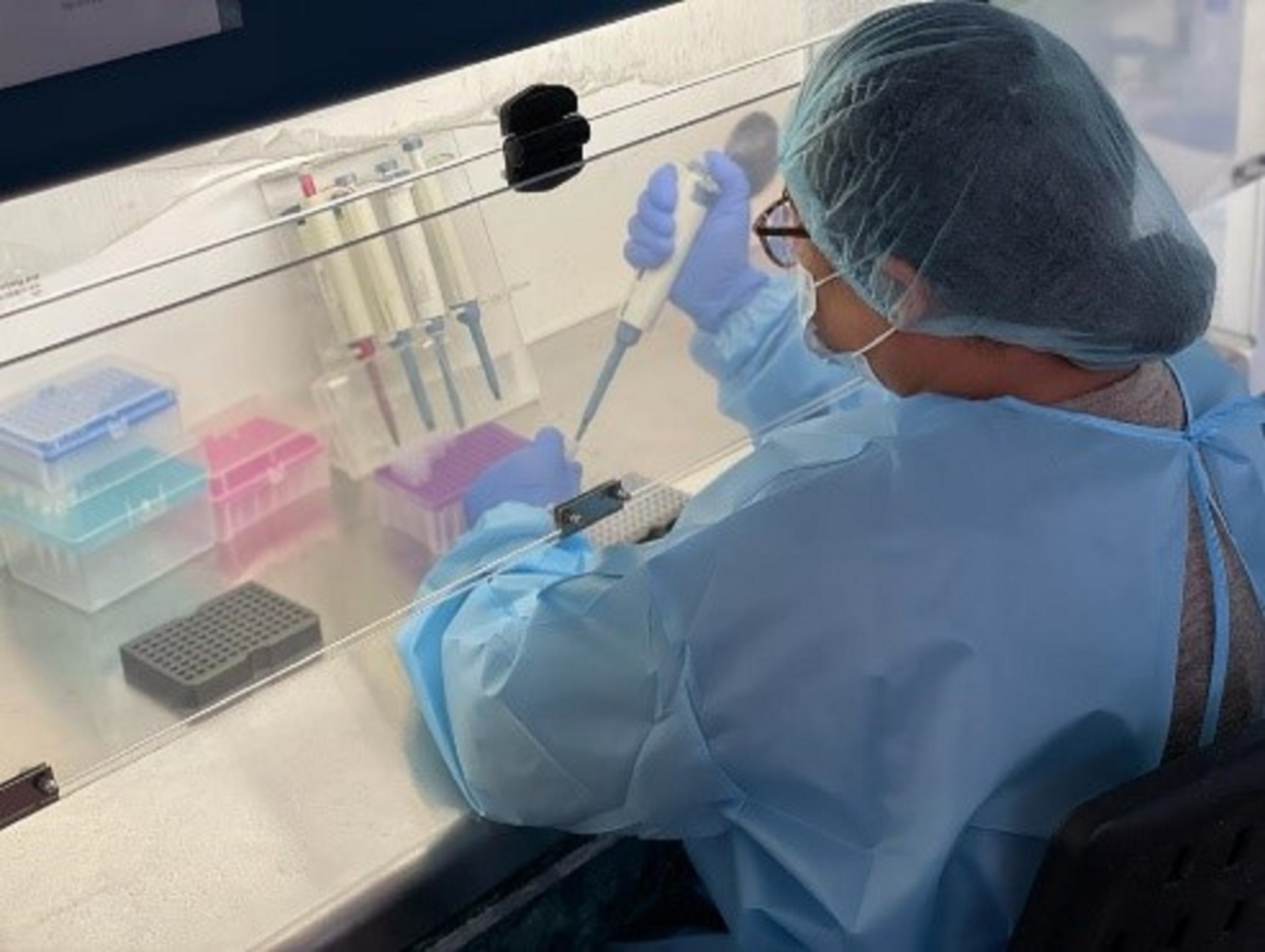To effectively control coronavirus disease (COVID-19), it is necessary to a) have widespread molecular diagnostic assays to identify SARS-CoV-2 infected individuals and b) have rapid virus genome sequencing to support monitoring of disease spread and activity as well as the evolution of the virus.
In January 2020, the first suspected case of COVID-19 was clinically diagnosed in Nepal. The National Influenza Centre (NIC) at the National Public Health Laboratory (NPHL) was the only public diagnostic respiratory laboratory in Nepal with capacity to conduct molecular diagnostic assays through real-time reverse transcriptase-polymerase chain reaction (rRT-PCR). However, the laboratory did not yet have the capacity to conduct rRT-PCR for SARS-CoV-2 nor was it able to sequence the virus. Recognizing the urgent need for widespread molecular diagnostic assays and genomic sequencing in the face of the pandemic, Nepal launched a collaborative capacity building effort. By March 2022, two years after WHO characterized the COVID-19 outbreak a pandemic, over 5.5 million molecular diagnostic assays for SARS-CoV-2 were conducted by 105 laboratories in Nepal (56% public sector, 44% private sector) and nearly 2000 SARS-CoV-2 genome sequences were shared with the Global Initiative on Sharing All Influenza Data (GISAID).

How did Nepal do it, and how did the WHO Secretariat support Nepal?
- By building molecular diagnostic capacity for SARS-CoV-2 in the national reference laboratory, the NIC – The NIC’s molecular diagnostic assay protocol for influenza was quickly adapted to test for SARS-CoV-2, and on 15 March 2020, the NPHL commenced testing for the virus. WHO deployed an international expert from the Global Outbreak Alert and Response Network (GOARN) to provide technical assistance, including for the development of surge testing plans aimed at increasing the number of samples tested each day. This included optimizing the operation of equipment, the procurement of reagents, and allocating staff and work shifts.
- By expanding quality molecular diagnostic assay capacity nationwide – NPHL led a collaborative capacity building effort between the Government of Nepal, WHO, academia, and the private sector. WHO technical experts worked with NPHL to identify and approve existing laboratories which could be repurposed for rRT-PCR testing, developed diagnostic laboratory standard operating procedures, work instructions, assessment and audit reports including the Interim Guidelines for SARS-CoV-2 PCR laboratories in National Public Health Laboratory Network Nepal, and trained laboratory personnel on use of the guidelines. Once laboratories began performing molecular diagnostic assays, WHO experts developed the laboratory quality assurance programme and provided expertise to develop a laboratory data management system for integrating laboratory and epidemiological data. Quality assurance activities included the validation of newly established laboratories (by parallel testing), monthly re-testing of random samples, in-house proficiency panels, and online and onsite laboratory audits. The WHO Country Office in Nepal provided direct financial support for recruitment of surge staff, transportation of samples, and procurement of panels for quality control.
- By developing international partnerships to sequence SARS-CoV-2 – Before Nepal had internal sequencing capacity, the Ministry of Health and Population (MOHP) requested WHO to arrange for sequencing to be conducted outside of the country. The WHO Country Office in Nepal, the WHO Regional Office for South-East Asia, and WHO headquarters engaged with three international entities to form partnerships between NPHL and laboratories in China, India, and the United Kingdom of Great Britain and Northern Ireland. WHO provided logistic support for shipment of clinical samples from patients with suspected COVID-19 to WHO reference laboratories. Nepal’s first case was confirmed through the University of Hong Kong School of Public Health Reference Laboratory which is a member of WHO’s established Global Influenza Surveillance and Response System. Thirteen subsequent samples were sent to the laboratory in Hong Kong for genomic sequencing. Later, to enable Nepal to sequence around 50 genomes per month with a shorter turnaround time, the WHO Regional Office for South-East Asia signed an agreement for performance of work for SARS-CoV-2 sequencing with the Institute of Genomics and Integrative Biology (IGIB) in New Delhi, India. Through this agreement, 227 samples were sequenced by March 2022. Finally, a material transfer agreement was created between NPHL and the New Variant Assessment Platform (NVAP) at Public Health England, now the UK Health Security Agency and Office for Health Improvement and Disparities (UKHSA). This enabled sequencing of 818 samples by March 2022. A tripartite agreement between WHO, NPHL and UKHSA is currently underway to extend the partnership beyond SARS-CoV-2 sequencing to other pathogens in the future.
- By increasing in-country capacity to conduct sequencing – The National Pathogen Genetic Sequencing Consortium became operational in October 2021 after the WHO Country Office procured a sequencing machine (Oxford Nanopore MinION Mk1C system) and reagents for the NPHL. WHO technical experts within the NPHL conducted genomic sequencing, interpreted the data, uploaded data in the GISAID platform, and trained other NPHL staff in genomic sequencing to build capacity. By March 2022, 432 genomes were sequenced, including the SARS-CoV-2 Omicron variant of concern which was detected by the NPHL with a turnaround time of six days. Subsequently a private laboratory also established a sequencing facility and contributed an additional 431 sequences.

“Having the capacity to conduct gene sequencing tests within the country has enabled us to detect the SARS-CoV-2 Omicron variant in a timely manner and to make quick and informed public health decisions.”
Dr Runa Jha
Director of National Public Health Laboratory, Nepal
Within the space of two years, strong national and international collaborative efforts, including technical and financial support from WHO, have transformed Nepal’s capacity to detect known and unknown emerging pathogens and strengthened Nepal’s compliance with the International Health Regulation (2005).
Photo Credit: © WHO Nepal
Photo Caption: A technologist preparing for COVID-19 rRT-PCR in the National Influenza Centre at National Public Health Laboratory, Nepal.
Photo Credit: © WHO NepalPhoto Caption: WHO Representative for Nepal handing over the Oxford Nanopore MinION Mk1C Gene Sequencer and reagents to the Director of the National Public Health Laboratory, Nepal.

